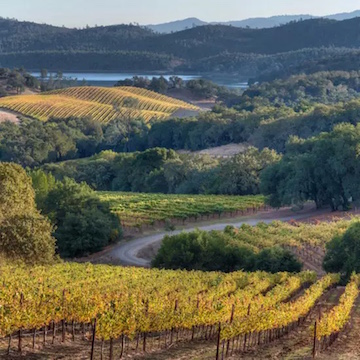The Underpriced Wines of Napa Valley
 Many in the wine industry believe that Napa Valley’s price/quality ratio is out of whack; that Napa Valley wines are overpriced. It is possible that these folks are all wrong? Or at least partially wrong? Is it possible that Napa Valley wine is under priced or a value?
Many in the wine industry believe that Napa Valley’s price/quality ratio is out of whack; that Napa Valley wines are overpriced. It is possible that these folks are all wrong? Or at least partially wrong? Is it possible that Napa Valley wine is under priced or a value?
This is the contention of John Conover, partner of the Plumpjack Group, which owns the Napa Valley estates Plumpjack, Cade and Odette. In an interview with Daniel Marsteller of Shanken News Daily today Conover made the case:
“Napa sometimes apologizes for our pricing, but I still think we deliver a great value. We’re in the game internationally in terms of quality, and often at a fraction of the price of other great wines.”
He’s right. When you compare Napa Valley’s overall pricing with the likes of top Bordeaux and Burgundy, Napa is not over the top expensive by any means. The radically high prices some Napa Valley cabs garner get the attention and tend to go a long way toward forming the impression of Napa Valley as over priced. But, one can travel up and down the Napa Valley and purchase who swaths of wine, including many Cabernets, Merlots and Blends, that fall into the $40 – $80 range. Moreover, one can find Napa Valley red wines and white wines for less than this, particularly those distributed through the three-tier system.
Conover’s view that Napa Valley can represent a value isn’t as rare as one might think. I’ve heard other long-time, experienced Napa hands express the same opinion. Most recently I had a rather in-depth conversation with one of Napa’s most experienced vineyard developers who expressed the view that Napa Valley is poised to enter a fourth state of development whereby a far larger number of the Valley’s wines take their place alongside France’s Grand Cru and first/second-growth wines in terms of prestige and pricing.
The argument is a fairly simple one: Napa is nearly planted out, with little room to grown in terms of vineyard development, while at the same time its reputation continues to grow, particularly in growing consumer markets like India and China. The additional demand will directly impact price setting of a larger number of Napa wines (both newer and older bottlings) both domestically and internationally.
Even without increased international demand of Napa Valley wine, you have to ask yourself what kind of circumstances would diminish the Napa Valley brand to such an extent that prices would not continue to increase over time? Is there a possibility that the quality of Napa wine will decrease? This seems remarkably unlikely. Is there a possibility that Milennials will turn their back on Napa Valley and instead stick with Rose, Grenache, Syrah and red blends from less expensive regions. Seems highly unlikely. All those jobs and higher pay that facilitate consumer aspirations are being given up by aging boomers in droves.
Even more importantly, try to think of any of the top quality wine regions in the world that have seen a decreased in perceived quality and demand over the past 40 years. Bordeaux? Burgundy? Rhone? Napa Valley? Oregon? None of them have seen a diminishment, even in the face of the emerging of many New World and Old World regions onto the world stage.
Going back to Conover’s statement to reporter Marsteller, he notes that “Napa sometimes  apologizes for our pricing.” He’s right. Sometimes we do see apologizing. But this isn’t very common to be honest. Most often, Napans don’t apologize for their prices, instead not really discussing the topic in public. And that’s exactly as it should be. The best and most highly acclaimed brands in the world simply don’t do this. They talk about quality and they talk about demand, which is exactly the concepts Napa Valley’s wine industry should be focused upon.
apologizes for our pricing.” He’s right. Sometimes we do see apologizing. But this isn’t very common to be honest. Most often, Napans don’t apologize for their prices, instead not really discussing the topic in public. And that’s exactly as it should be. The best and most highly acclaimed brands in the world simply don’t do this. They talk about quality and they talk about demand, which is exactly the concepts Napa Valley’s wine industry should be focused upon.
So, does this mean that Napa Valley is a good investment? Maybe. If you’ve got the money to play with and if you have a mid to longterm investment horizon, Napa vineyard land is likely to be an investment that does better than the S&P. What about wines? Is that $5,000 Screaming Eagle Sauvignon Blanc you bought going to beat the S&P over ten years? I don’t know. But would anyone be surprised if the $3,500 you paid for the Screaming Eagle red did better than the S&P over a ten-year period. I wouldn’t be shocked at all.
Are there better vineyard investment opportunities than Napa Valley? There are others far better qualified to answer that question. But who among us would be surprised to learn that over the next ten years Napa Valley vineyards appreciated at a greater rate than 90% of all other vineyard land?
I think John Conover is right. I think over the long-term the marketplace will convincingly tell us that the 2018 prices for Napa Valley wine were nowhere near the top.

Leave a Reply